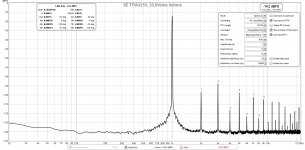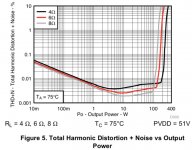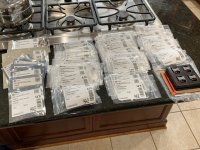Here is the BOM in CSV spreadsheet (zip file) and associated Moiuser shopping cart for 1 amp board.
Shopping Cart is here. Please save as your own project before modifying or ordering:
Mouser Electronics
 EDIT: Updated BOM in post#503, link - TPA3255 Reference Design Class D Amp GB
EDIT: Updated BOM in post#503, link - TPA3255 Reference Design Class D Amp GB 
Shopping Cart is here. Please save as your own project before modifying or ordering:
Mouser Electronics
 EDIT: Updated BOM in post#503, link - TPA3255 Reference Design Class D Amp GB
EDIT: Updated BOM in post#503, link - TPA3255 Reference Design Class D Amp GB 
Attachments
Last edited by a moderator:
I tested a made-in-China 3E TPA3255 BTL amp today. Used a 1200w DC-DC step up from 12v Pb-acid battery for 51vdc rail. No low pass filter - just 11:1 attenuator into Focusrite 2i4 and Akitika 2ppm 1khz oscillator.
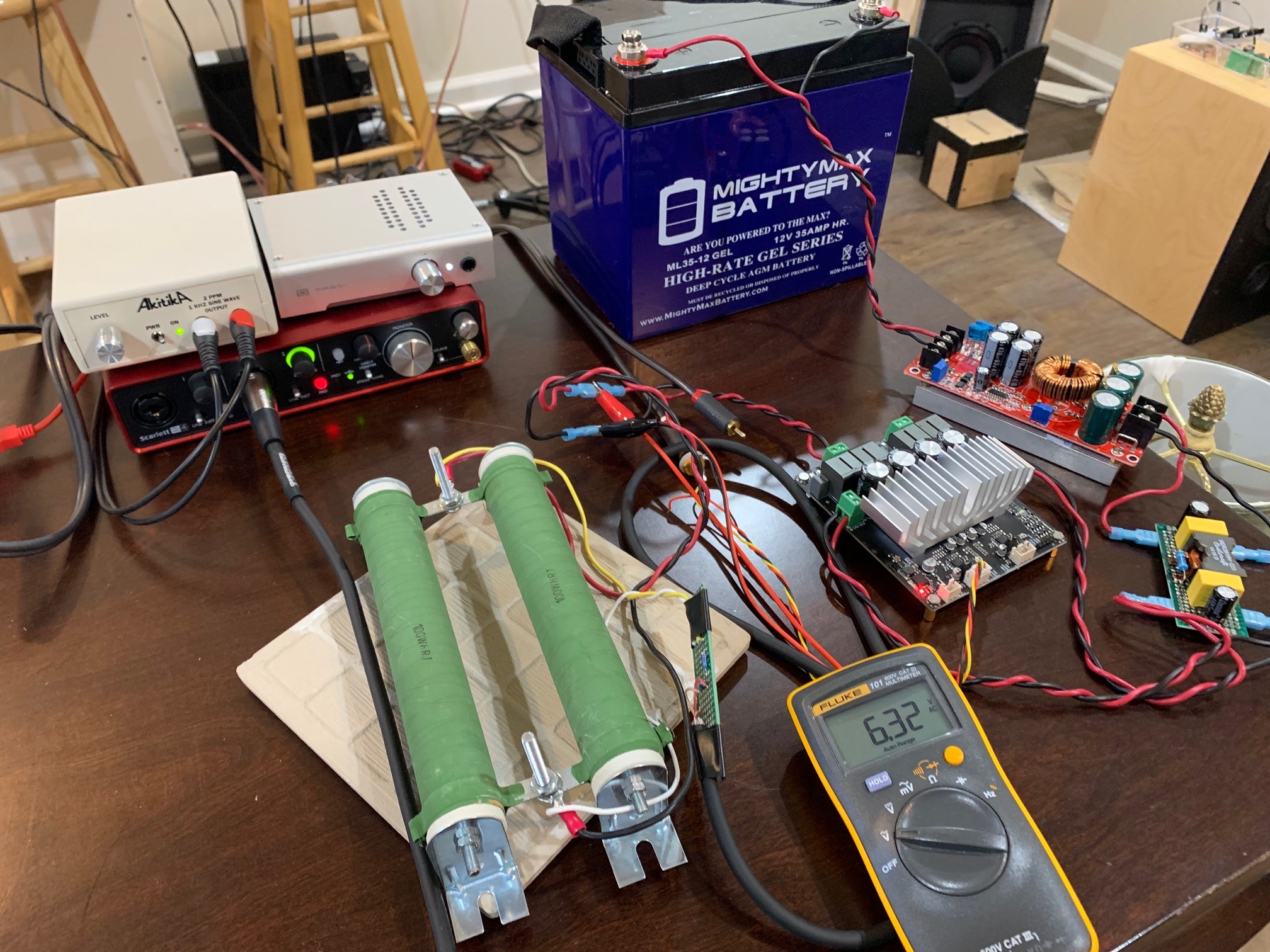
More info here:
Howto - Distortion Measurements with REW
Here is FFT for 50w into 8ohms:
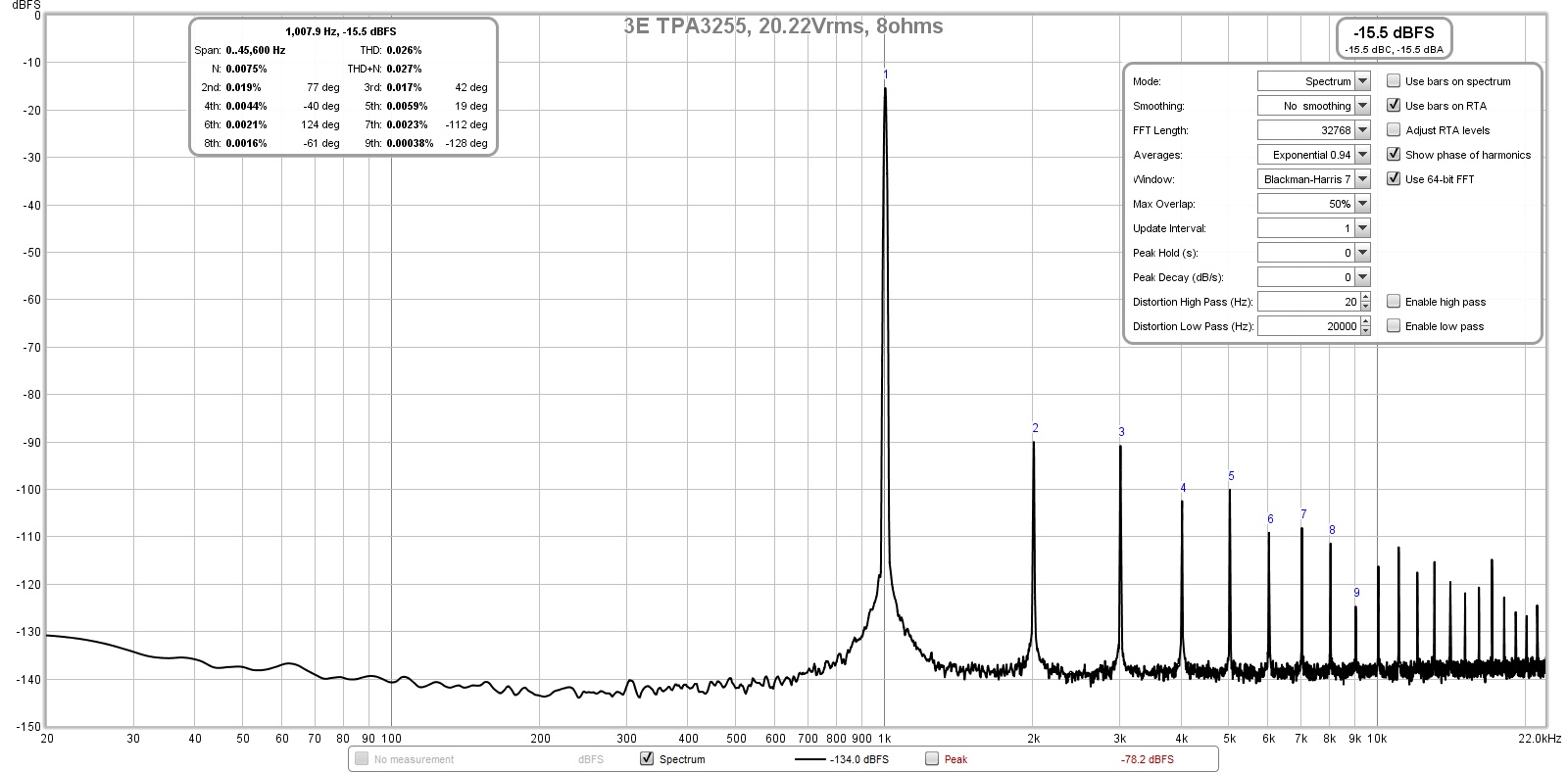
here FFT for 100w into 8ohms:
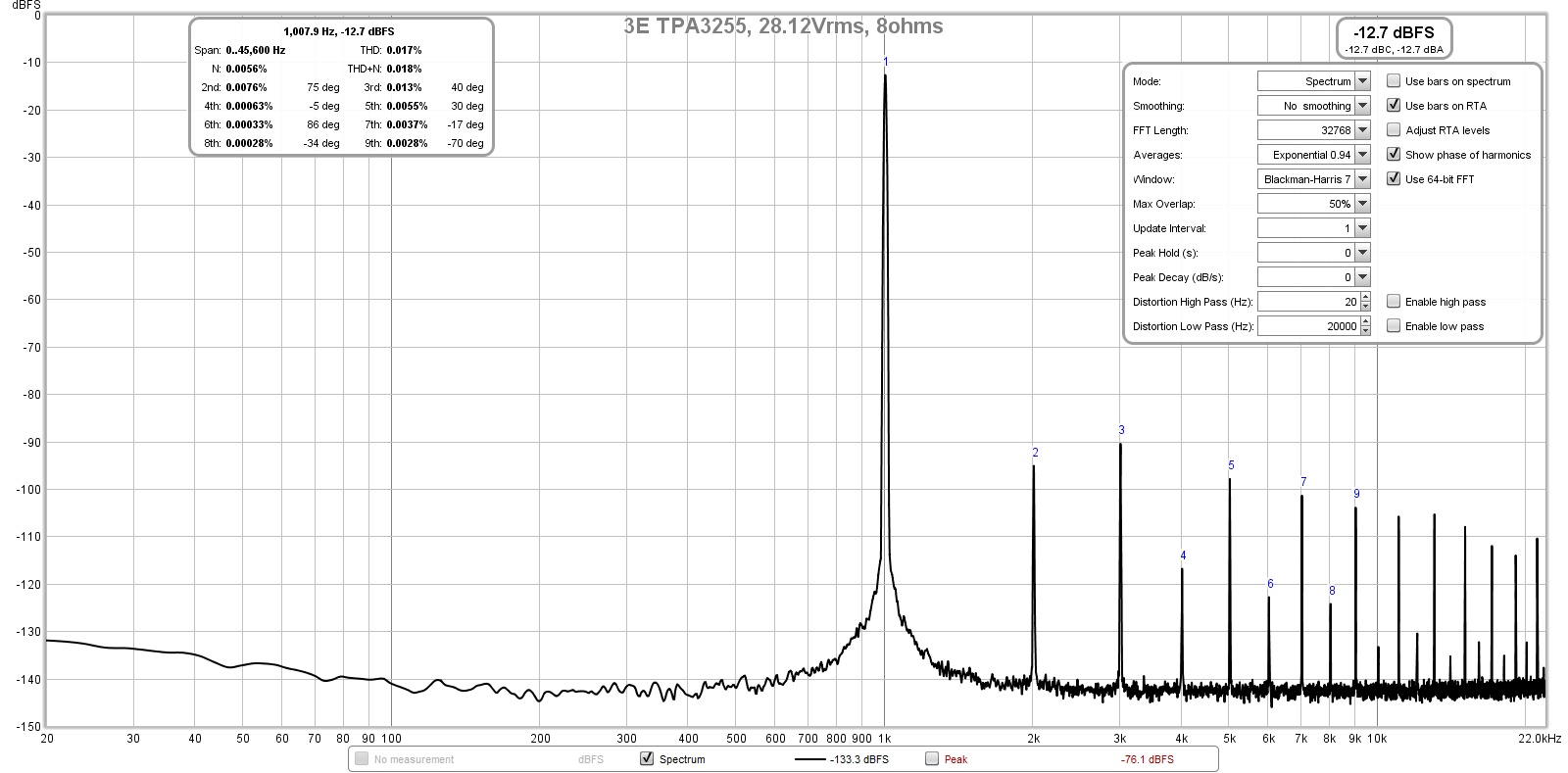
Here us FFT for 100w into 4ohms:
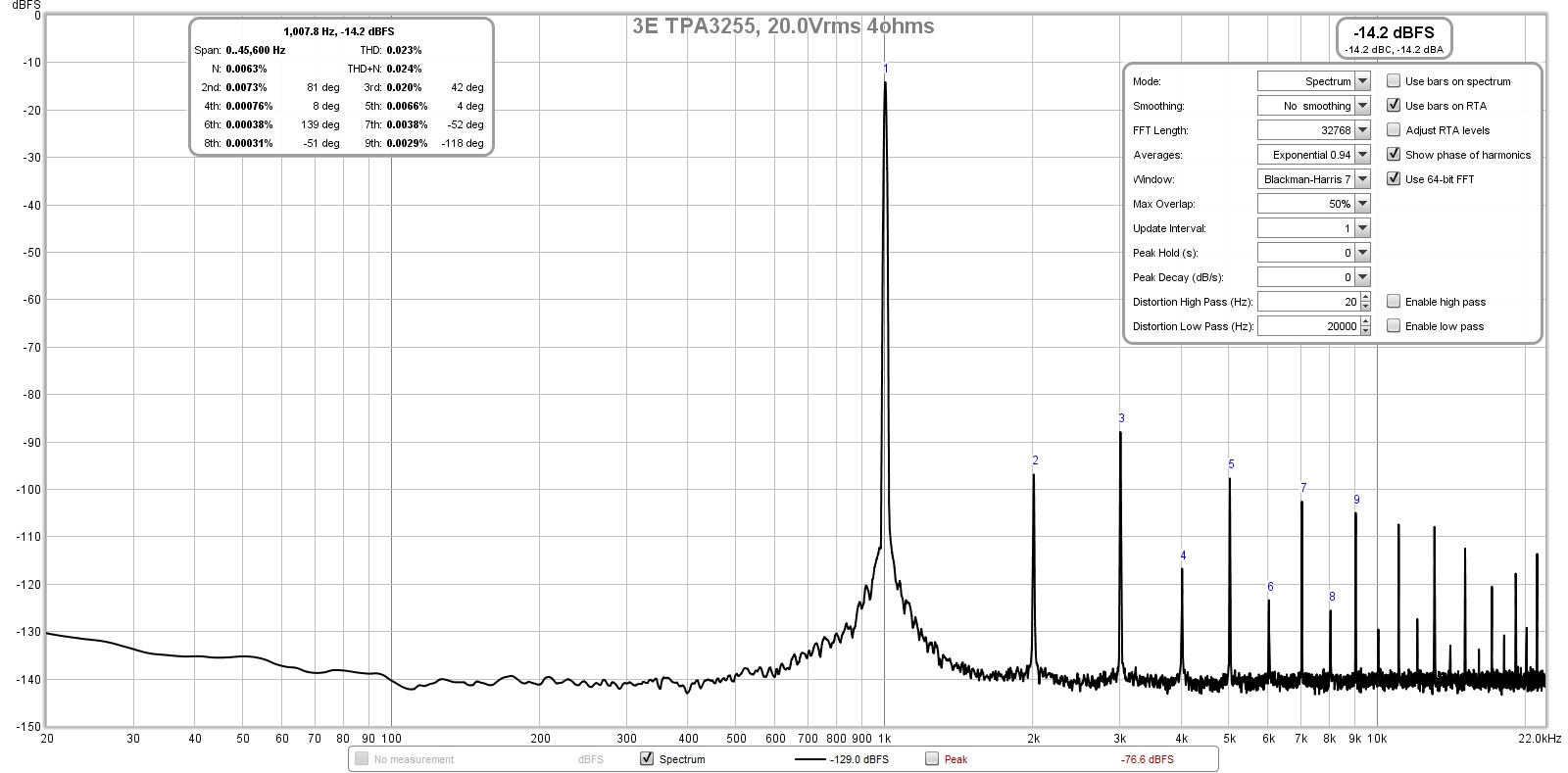
More info here:
Howto - Distortion Measurements with REW
Here is FFT for 50w into 8ohms:
here FFT for 100w into 8ohms:
Here us FFT for 100w into 4ohms:
Attachments
Last edited:
If we look at TI datasheet, it would suggest that THD+N should be about 10x less. That is, in the 0.00x% range, not 0.0x% range. With the Class A amps (and Class AB) that I design, I aim for a dominant second harmonic and a monotonically descending higher orders, and as few higher orders as possible. Basically only H2 and H3 would be ideal. Such is the case with the Alpha amps. However, this so Class D where the signal is reconstructed from a modulated carrier, I am not quite sure what to expect with the profile.
From datasheet, same Pvdd of 51v:
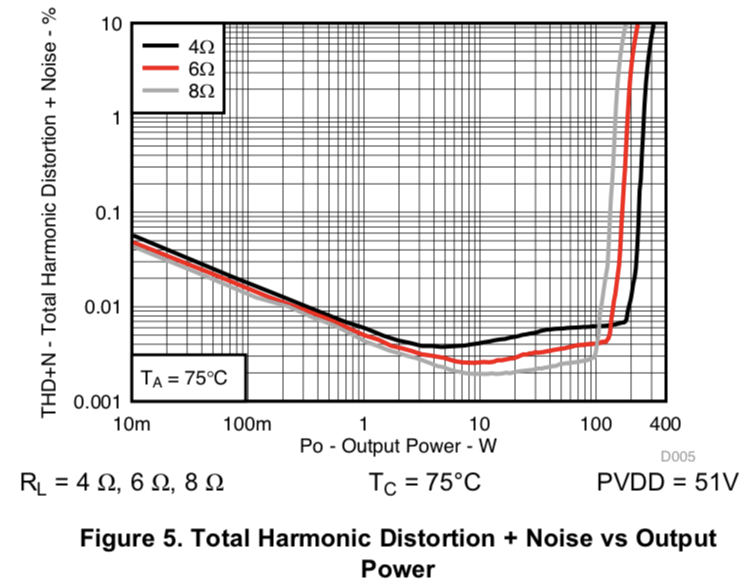
Many highly regarded amps have 0.05% THD, so that’s not a problem, I would prefer to not see so many higher order harmonics. So it may have something to do with the particular implementation by 3E. I don’t know how important it is to have an anti-aliasing filter to block off the carrier modulation above 100KHz. Although, if that was affecting things, the whole baseline would rise. But it is at the expected level for the Focusrite. The baseline does rise when we are the verge of clipping.
From datasheet, same Pvdd of 51v:
Many highly regarded amps have 0.05% THD, so that’s not a problem, I would prefer to not see so many higher order harmonics. So it may have something to do with the particular implementation by 3E. I don’t know how important it is to have an anti-aliasing filter to block off the carrier modulation above 100KHz. Although, if that was affecting things, the whole baseline would rise. But it is at the expected level for the Focusrite. The baseline does rise when we are the verge of clipping.
Attachments
I think tpa32xx are h2 dominant, increase output and the inductors add more and more h3, your chosen inductors possibly a little later/less than the sagami-like on 3e. One magnitude less distortion could also be in rearranging/cleaning testsetup
Hmm, i wouldn't have my low-voltage signal lines in parallel with the load resistors while measuring THD performance especially at class-d amps. The test setup is prone to pickup alot of unwanted noise from any radiating source.
From datasheet, the boards should measure much better:
http://www.3e-audio.com/wp-content/uploads/2018/07/DS_EAUMT-0260-2-A_Rev1.0.pdf
From datasheet, the boards should measure much better:
http://www.3e-audio.com/wp-content/uploads/2018/07/DS_EAUMT-0260-2-A_Rev1.0.pdf
I’ll tidy up the wiring and try again. But even at 2.83v, the THD was higher than at higher power - if it were pickup - it would get worse with higher current/voltage.
You may try with another power supply and/or with some batteries in series to hit the voltage demands. A clean bench power supply will most likely show better performance.
From my experience it is good practice to twist all diff wires tidy, (power supply, outputs to load). Wire/Signal crossing should always be done in 90°. Keep everything seperated like
Load<---- Amp---- <Power supply
Connect signal source and Measuring-Box in 90° from top to corresponding devices. Use a laptop for measuring if possible with no live connection (power supply)
From my experience it is good practice to twist all diff wires tidy, (power supply, outputs to load). Wire/Signal crossing should always be done in 90°. Keep everything seperated like
Load<---- Amp---- <Power supply
Connect signal source and Measuring-Box in 90° from top to corresponding devices. Use a laptop for measuring if possible with no live connection (power supply)
I was indeed on all battery via laptop. I had tried a Connexelectronic 48v 800w SMPS. It was noisy, which is why I went with battery powered DC-DC. As you can see, there is no noise from mains at 60/120/180Hz etc.
This similar setup is used to measure lower distortion on other amps so don’t think its the culprit here, despite the layout. Could this be the fact that output indicators are right next to each other and aligned on same axis?
This similar setup is used to measure lower distortion on other amps so don’t think its the culprit here, despite the layout. Could this be the fact that output indicators are right next to each other and aligned on same axis?
Desolder them and compare, I can't say. Another try would be without heatsink (and or with/without isolator between 3255 thermal pad/slug and heatsink/GND)
What does a loopback test show? Next I'd try bypassing the opamp AFE and feed directly (differentially) into the 3255 inputs.
Have you tried a measurent without your lowpass-filter?
What does a loopback test show? Next I'd try bypassing the opamp AFE and feed directly (differentially) into the 3255 inputs.
Have you tried a measurent without your lowpass-filter?
I did a bunch of loopbacks using both Focusrite Solo and 2i4, about same performance:
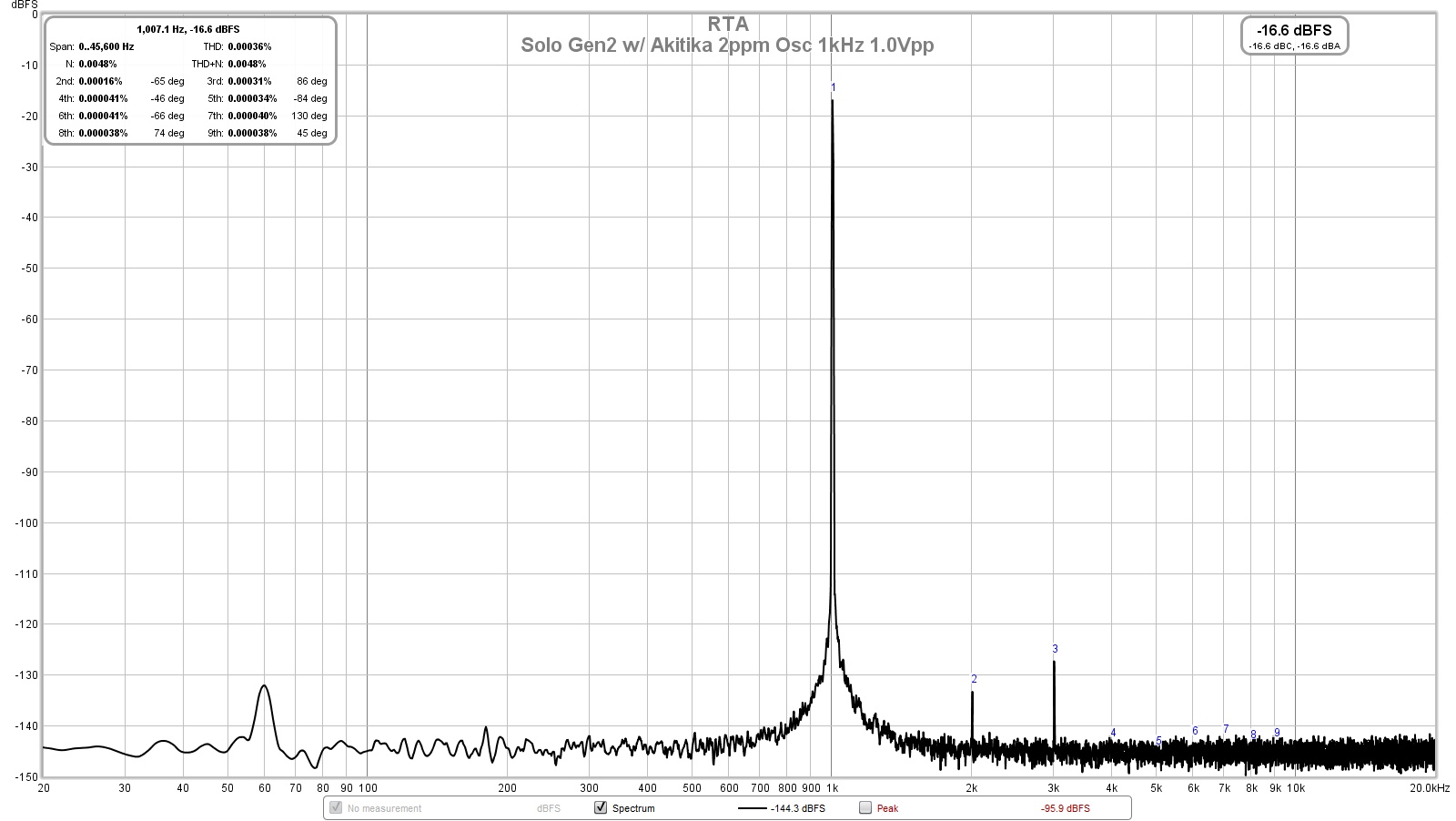
I was not using low pass filter on the TPA3255 dummy load.
I was not using low pass filter on the TPA3255 dummy load.
I have 3ch 3eaudio TPA3251 and it doen't have pffb implantation. It has footprints but 3e doesn't recommand to use pffb as they had instabilities when they try it. Don't know if the 3255 is in the same case but I suppose the answer is yes.
Nice one, look forward to seeing how it goes!
On a side track but related in application at least(no idea what amp is in them...). These look pretty swish!
http://www.powersoft-audio.com/en/docman/1206-minimod-4-datasheet/file
http://www.powersoft-audio.com/en/docman/1353-minimod-4-user-guide/file
On a side track but related in application at least(no idea what amp is in them...). These look pretty swish!
http://www.powersoft-audio.com/en/docman/1206-minimod-4-datasheet/file
http://www.powersoft-audio.com/en/docman/1353-minimod-4-user-guide/file
Please describe your test setup in detail. Do you measure BTL bridge with a symm input analyzer? Measuring only one half bridge gives pretty bad THD numbers. I prefer measuring with some 24bit soundcard like emu-0202 feeding the btl-output through a symm 30dB-attenuator to the symm line input driving its ADC between -20~-10 dBFS.
And yes, a preceeding loopback measurement might be insightful.
Edit: I see you did a loopback measurement with the focusrite, the result is quite similar to my observations here.
I managed to build a TPA PBTL board where the resolution of the soundcard nearly reached its limits, so there is room for improvement.
And yes, a preceeding loopback measurement might be insightful.
Edit: I see you did a loopback measurement with the focusrite, the result is quite similar to my observations here.
I managed to build a TPA PBTL board where the resolution of the soundcard nearly reached its limits, so there is room for improvement.
Last edited:
- Home
- Group Buys
- TPA3255 Reference Design Class D Amp GB
